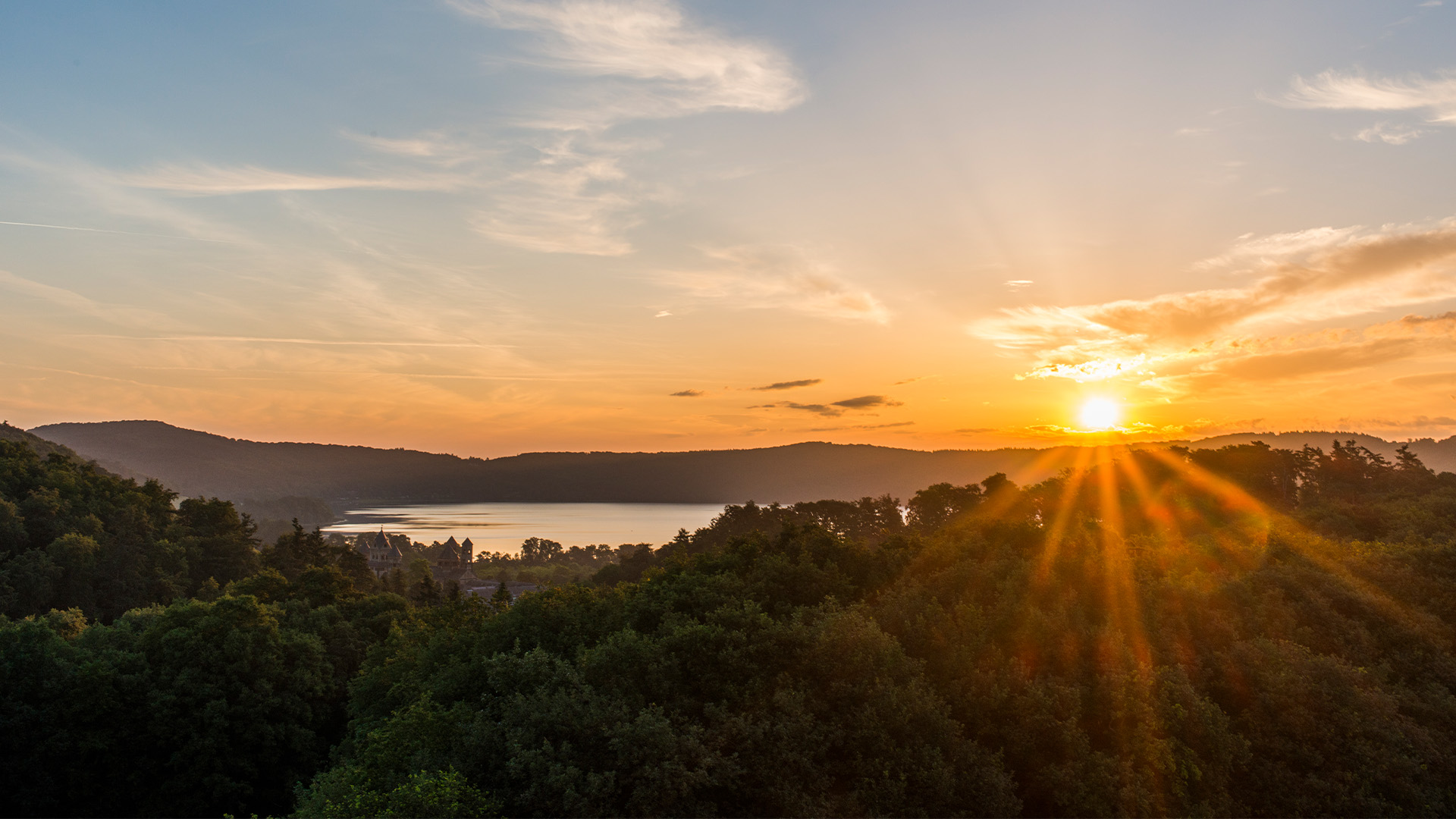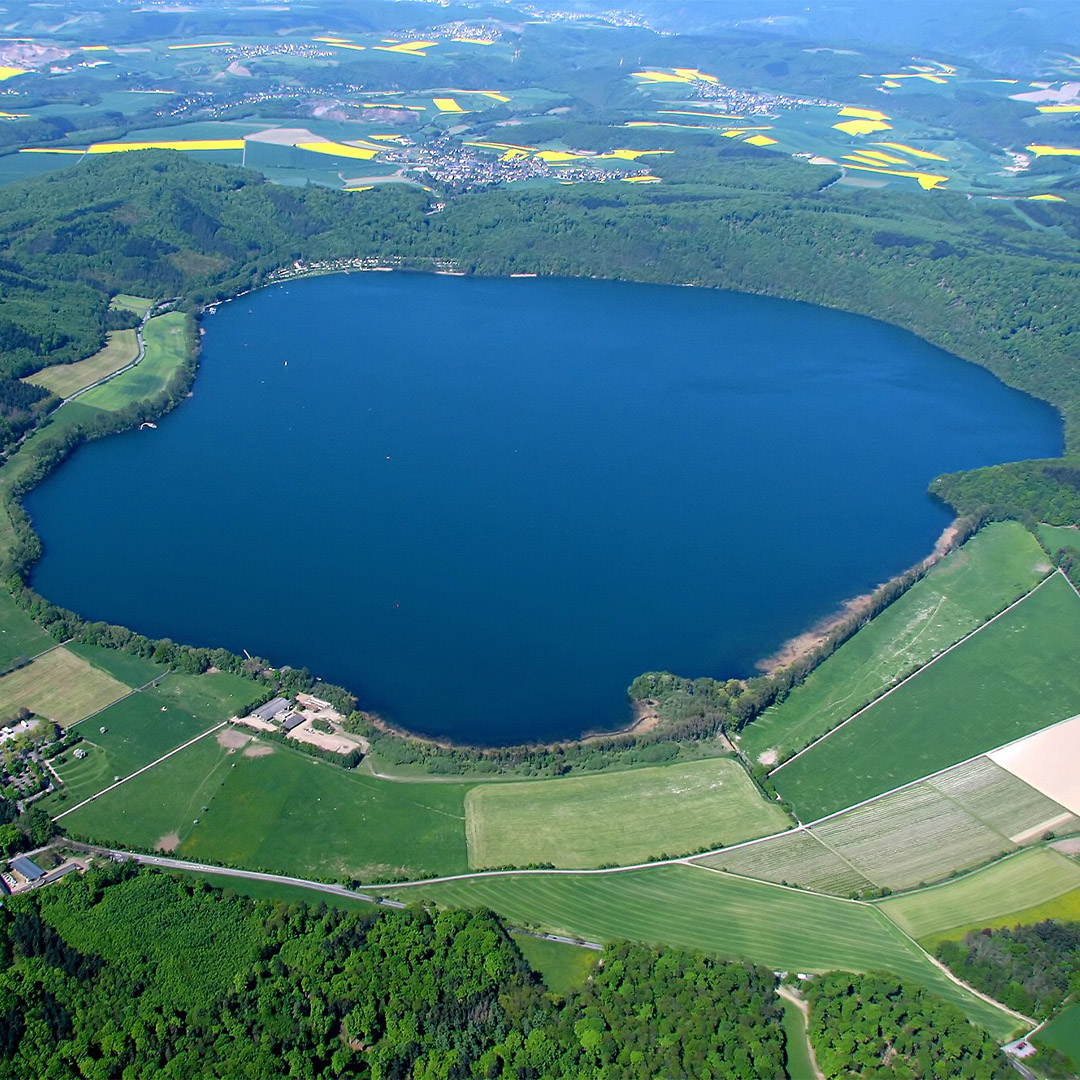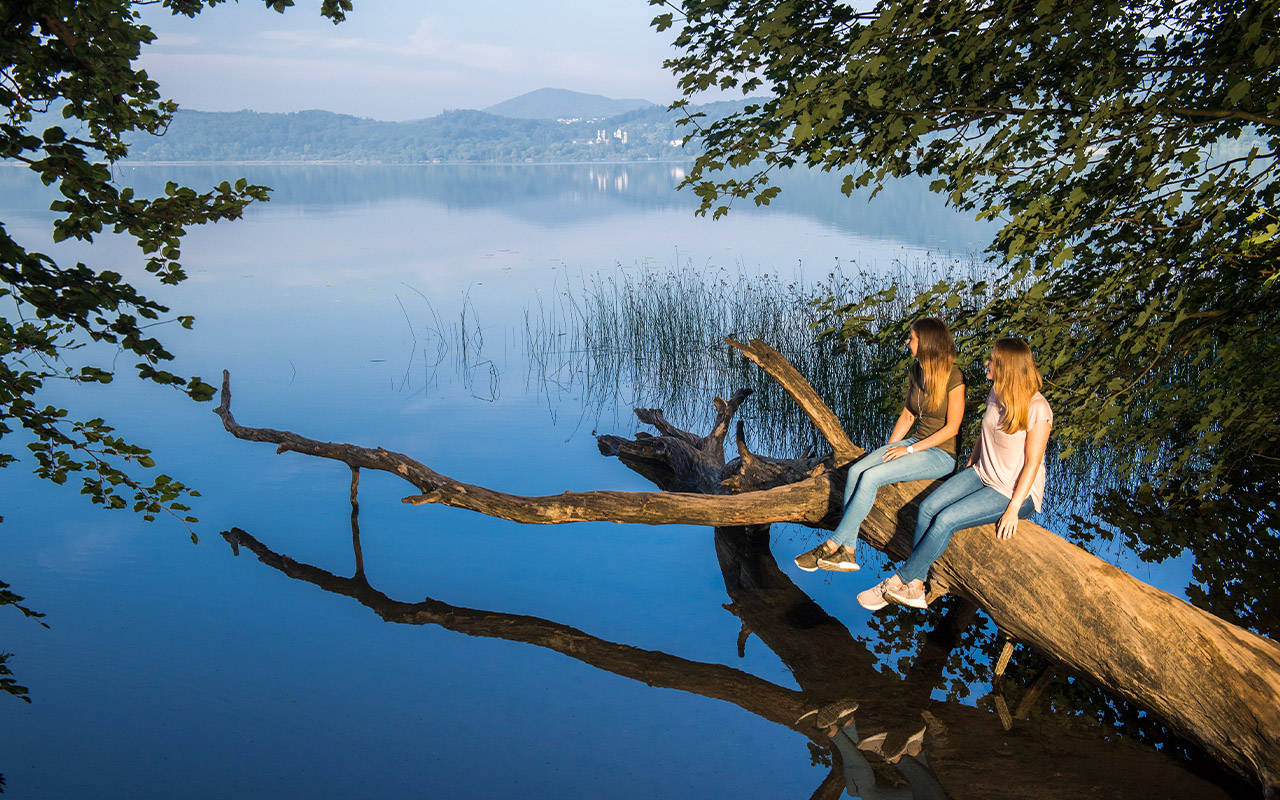LAKE LAACHER SEE
Experience nature
What is volcanism?
Volcanism, or volcanicity, comes from the Latin word “vulcanus”. In Roman mythology, Vulcan, the god of fire and smithery, was said to reside beneath Mount Etna.
A volcano is a geological structure that is created when magma – molten rock – rises to the surface of a planet. All aspects of this event fall under the definition of volcanism.
At a depth of 100 km or more, at temperatures between 1,000 and 1,300°C, rock melts to form viscoplastic magma, which collects in large pools called magma chambers located between 2 and 50 km below the Earth’s surface. When the pressure increases too much, the magma rises through cracks and crevices into the lithosphere. Magma that reaches the Earth’s surface in this way is known as lava.
When a volcano explodes, solids and gasses are released in addition to molten rock.
Ash fall over Europe
For 500,000 years the Eifel was an active volcanic region; it was last active around 13,000 years ago. At that time, an enormous eruption of the Lake Laacher See volcano, which probably lasted only a few days, brought ash fall to large parts of Central Europe.
A magma chamber had formed at a depth of around 3 km; here, the hot molten rock stagnated and mixed in the upper part of the chamber with volatile gases. This lessened the density of the magma and facilitated its rise to the surface. When the magma made contact with ground water, a massive explosion of steam created a funnel-like vent. The resulting release of pressure made the gases that had dissolved in the magma expand and allowed the devastating eruption to occur. An eruption column of pumice and ash particles was driven high in the sky by the force of the expanding gases; in some cases, it rose up to 30 km into the atmosphere.
As the gas pressure reduced and the vent continued to expand, the force of the explosion was no longer sufficient to hurl larger particles so high and the eruption column began to collapse. Heavy ash particles, pumice and rock debris that had been suspended by volcanic gases and hot air fell from the eruption column back to Earth and spread at high speed along the ground as an avalanche of hot lava.
Mofettes on the bank
Even today it is still hotter below Lake Laacher See than anywhere else in Central Europe and from the slowly cooling, underground magma chamber, carbon dioxide is constantly escaping through fine crevices and cracks and rising to the surface. Look out for these gas bubbles (mofettes) rising along the banks of the lake.




